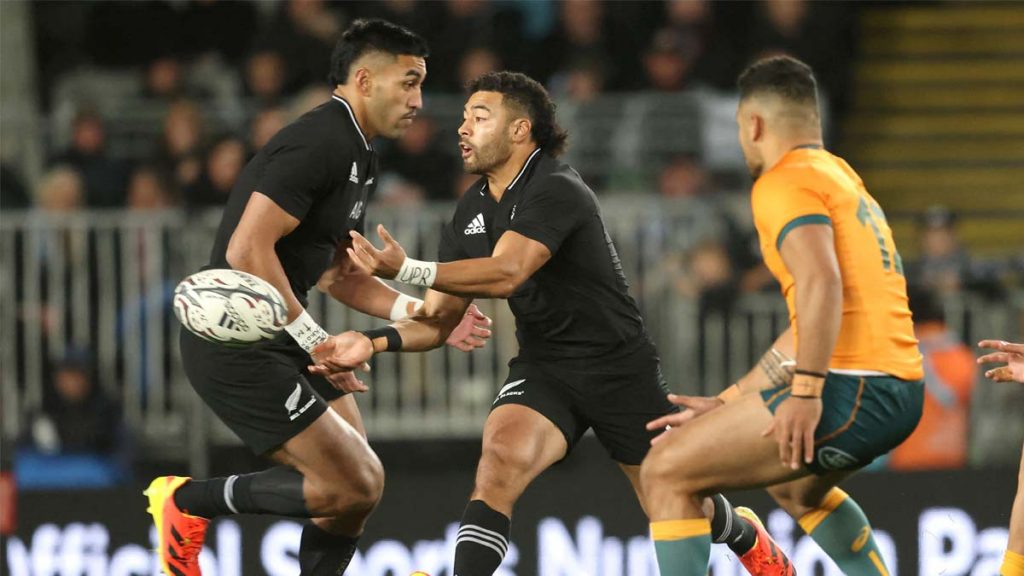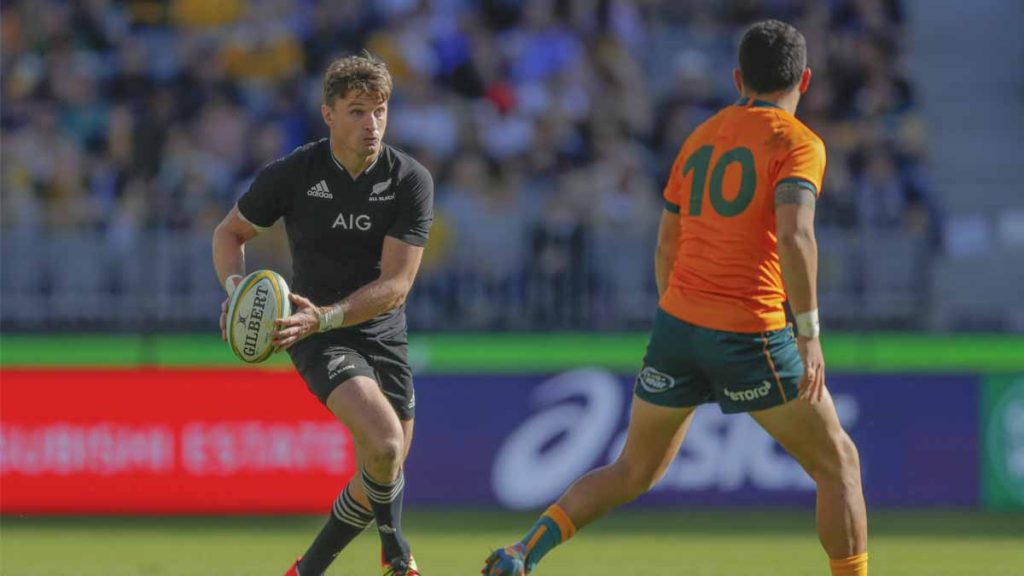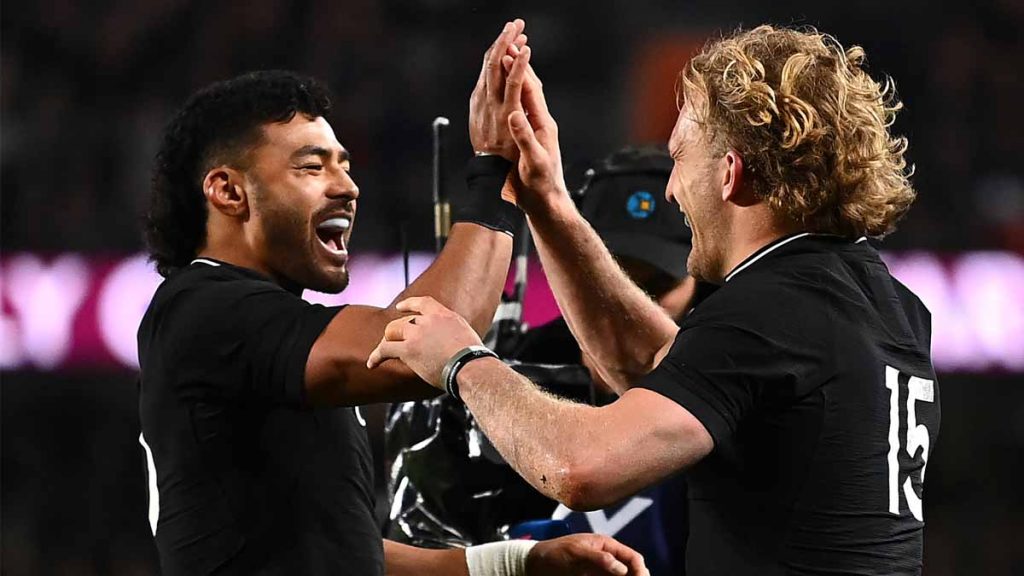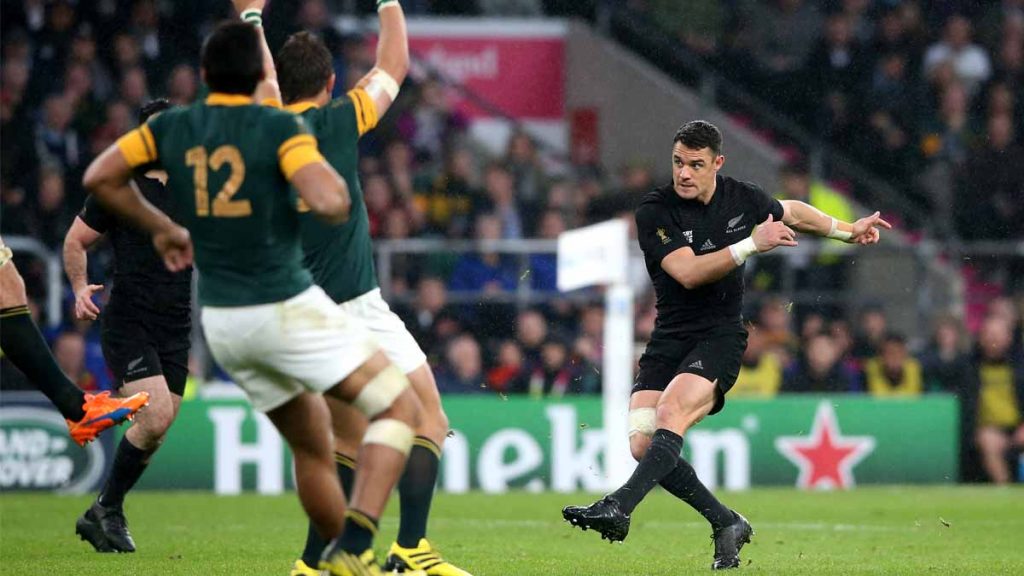The New Zealand rugby public and large swathes of the media have never been good at understanding when a great player’s career is in a temporary lull and when it might have reached terminal decline.
Too readily the determination is made to declare the latter and write a legend off. It typically only takes a few months of underperformance, or maybe half a season or so, before red stickers are slapped on players once hailed the greatest.
To some extent, this is the way of life in New Zealand, a country where great players seemingly emerge every other week. There is such a rich supply of talent that even those who have enthralled and entertained the world for successive years, can be cruelly cast aside by a public that has little patience or tolerance for someone not quite delivering what they used to.
No one is immune from this phenomenon in New Zealand and the latest case in point is Beauden Barrett, who is likely to enjoy a semi-extended run in the All Blacks No 10 jersey with opinion divided as to whether he still has the game to re-establish himself permanently as New Zealand’s preferred playmaker.
A window has opened for Barrett courtesy of the tougher quarantine requirements for travellers between New Zealand and Australia.
His rival for the No 10 jersey, Richie Mo’unga, remained in New Zealand awaiting the birth of his second child when the rest of the team travelled to Perth. With limited flights to Australia, a demand to do two weeks hard quarantine once he gets there, and a need to re-condition for at least a week before he can be considered for selection, the best-case scenario for the Crusader is that he will be available for the second test against the Springboks on October 2.

There’s every chance, however, that Mo’unga takes no part in the Rugby Championship, leaving Barrett with another three, possibly four starts in the role.
The question that many have is whether Barrett can exploit the opportunity fate has presented and prove he is still a world class player with incredible gifts.
Barrett, at his best, ranks as one of the greatest No 10s the world has seen. The Welsh say Barry John was a great running No 10, but even he wasn’t in the same league as Barrett, who in 2016 in Dublin, took a pass from a scrum and was so quick, he coasted outside Johnny Sexton without the Irish great being able to lay a hand on him.
Barrett grabbed hold of the All Blacks No 10 jersey after Daniel Carter retired in 2015 and took his game to astonishing heights. He was World Player of the Year in 2016 and 2017 and short-listed in 2018.
We have to go back to Eden Park in August 2018 to recall the last occasion Barrett was tormenting and destroying defences.
But an enforced move to fullback in 2019 for the greater good of the team’s preference to run with dual play-makers, a shortened 2020 season due to Covid and then a club season in Japan in 2021, have reduced Barrett to a peripheral figure.
We have to go back to Eden Park in August 2018 to recall the last occasion Barrett was tormenting and destroying defences. He scored four tries in the demolition of the Wallabies back then and produced a performance that was comparable with the epic one delivered by Carter against the British and Irish Lions in 2005.
Opinion seems to be split as to whether Barrett can still play at the level he did between 2016 and 2018, but certainly more are starting to believe he can after he delivered what was a mostly convincing and memorable performance in the 38-21 defeat of the Wallabies in Perth.
It wasn’t vintage Barrett, but there were promising signs. His defence was outstanding – an area of the game in which Mo’unga still has his off nights.
Barrett’s game management was good and there were flashes of his brilliance – the way he dinked the ball through the rushing Wallabies defence with his left foot to set up the first try was an act of outrageous skill.

The All Blacks certainly looked composed and together with Barrett on the field and he put them in all the right places and did all the right things after his brother Jordie had wrongly been sent off to leave the All Blacks down to 14 men for 20 minutes.
The only part of his game way off was his goal-kicking, which was quite awful. However, as head coach Ian Foster said: “Clearly it wasn’t the night for either kickers, but, particularly in Beauden’s case, if he had to get one of the two things right – goal-kicking or playing really well, I’m really pleased he got the right one right.
“I thought he handled the game really, really well. Great decision-making, particularly early, and he was really calm when we were under a bit of pressure with the red card against Jordie.”
What’s of particular interest is that in the 25 minutes Jordie played before his red card, he and Beauden appeared to be combining well as a playmaking partnership.
The physical presence of the Barrett brothers appeals. They are both considerably larger and heavier than Mo’unga and McKenzie and their combined test experience is considerably greater, too.
Foster is not a fan of the dual playmaker name, but he does like the concept.
Mo’unga and Damian McKenzie were building a strong combination earlier in the season and Barrett and McKenzie were a partnership in the latter half of 2018. But the pairing that ticks the most boxes is Barrett and Barrett and if these two can show that they gel and read each other with ease, it will go some way towards keeping the older brother in the No 10 jersey when Mo’unga returns.
The physical presence of the Barrett brothers appeals. They are both considerably larger and heavier than Mo’unga and McKenzie and their combined test experience is considerably greater, too.
But, despite the value of a combination, Barrett’s fate still mostly rests on his ability to demonstrate he’s a class act in the No 10 role and still has the searing acceleration to burn off defences, the maturity to control the game and the calm and composure to execute well under pressure.
For the minority who feel it’s beyond him and that his best years are behind him, some caution needs to be applied.

Barrett has posted just the one memorable performance this year and prior to the test in Perth, had been a moderate contributor.
He had been finding it hard to find his rhythm and confidence, but that was not a surprise to Foster. He had always expected that Barrett would be a slow burn this year – that it would take a few months for Barrett to sharpen his instincts and micro skill execution.
In Japan, his basic skills weren’t under the microscope in the same way they would have been had he played in Super Rugby and Foster knew he was going to have to be patient.
What mattered was that Barrett demonstrated improvement every time he played and from being rusty and awkward against Tonga, he was sharper and more effective three tests later when he came off the bench against Australia in successive weekends at Eden Park.
It reached the point that by June 2015, there were few outside the All Blacks management team backing [Carter] to make the World Cup squad. Mostly he was deemed broken, past it and at 33, no longer capable of playing at the level he had been.
Barrett has been building towards better form and if his critics are still determined to dismiss what has been in plain sight, then maybe it is worth remembering how things were with Carter.
He was mostly written off as finished between 2013 and the start of the World Cup in 2015.
He endured an horrendous run of injuries after the 2011 World Cup – including a nasty one at the tournament itself which famously ruled him out of the knock-out rounds – and he couldn’t string together a run of games or build any form.
It reached the point that by June 2015, there were few outside the All Blacks management team backing him to make the World Cup squad. Mostly he was deemed broken, past it and at 33, no longer capable of playing at the level he had been.
As Carter proved, though, those who doubted him were wrong to do so. He finally managed to shake himself free of all the injury effects he’d suffered and was outstanding at the World Cup. He was so good, that selector Grant Fox, says the All Blacks may not have beaten South Africa in the semi-final had it not been for the control, accuracy and tactical vision of Carter. “We will never know that but possibly not,” says Fox in Steve Hansen The Legacy. “We might have been all right, but South Africa was the dog fight that perhaps would have ruined it for us without Daniel.”

Carter finished the tournament as not only a world champion, but as World Player of the Year and provided a salient lesson about keeping the faith and not writing off great players too soon. As Carter said in that same book, “That was a big part of the driving force throughout the 2015 World Cup to repay the faith they showed in me.
“A year earlier I was having doubts and because I was having doubt I wasn’t really having conversations with Steve, so I just assumed that he would be thinking the same as the public and parts of the media … Why would you pick him when he’s injured all the time and not showing us the form that he had?
“We had a conversation about that and he swore that it hadn’t even come into his mind. He said that as long as I was fit, I was always going to be part of his group and just hearing that took a whole lot of stress off my shoulders, but at the same time I was like, I am going repay the faith you have put in me.”
Barrett is younger than Carter was when the knives came out. At 29, he appears to still be the athlete he’s always been and there has been no detectable slowing or lack of mobility in his game.
The evidence points towards the conclusion of Barrett still being a great player with the capacity to do great things.


Comments
Join free and tell us what you really think!
Sign up for free